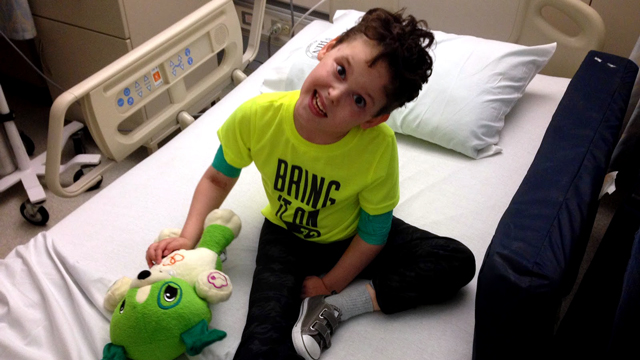In 2012, Matt Might sat down to write a blog post. The 5000-word essay titled “Hunting Down My Son’s Killer,” which was also republished on Gizmodo, documented his and his wife’s harrowing attempt to make sense of their son’s mysterious illness. The post went viral online — setting the family down a road that could change medical research. In the New Yorker, journalist Seth Mnookin tells the story of what’s happened since.
Matt and his wife Cristina knew there was something wrong with their son Bertrand when he was born. His body was unusually “jiggly,” and he seemed constantly agitated. They found out he suffered from constant seizure-like activity in his brain, but they didn’t find out why. For years, the family bounced from doctor to doctor, who promised diagnoses only to have them proved incorrect.
Bertrand was eventually placed in a study that sequenced his and his parents’ exomes, the two per cent of our DNA that codes for protein. Finally, geneticists identified a faulty gene called NGLY1 as the cause of his illness. Was this the end of the story? No, only the beginning.
With only one known case of this disorder, writes Mnookin in the New Yorker, “there was virtually no possibility of getting a pharmaceutical company to investigate the disorder, no chance of drug trials, no way even to persuade the F.D.A. to allow Bertrand to try off-label drugs that might be beneficial.” So Might went to find other patients.
A computer scientist, Might also had some serious cred on Hacker News thanks to a blog post of his about graduate school that went viral several year ago. He set up what he calls a “Google dragnet” to find other patients who might be searching for the same symptoms; he wrote a blog post. Here’s how Mnookin describes the hours after Matt wrote his post.
Half an hour after Matt hit “publish,” Twitter began to light up. By the end of the day, “Hunting Down My Son’s Killer” was the top story on Reddit. The next morning, an editor from Gizmodo, a tech blog owned by Gawker Media, asked Matt for permission to republish the essay. In less than twenty-four hours, the post had gone viral. The more it was shared and linked to, the higher it rose in search engines’ rankings, and the easier it would be for parents of other children to find.
As Bertrand’s story bounced from inbox to inbox, it eventually landed in that of the parents of Grace Wilsey, a girl whose mysterious illness turned out to also be caused by NGLY1. The Mights have since found nine cases like their son’s.
If the Mights’ story is about the triumph of the internet, it is also about flaws in the traditional research community. It was impossible to find other cases related to NGLY1 in existing databases because researchers are unwilling to share genomic data — due to fears about patient privacy but also about not getting credit for a discovery. Social media has upended how patients with rare diseases find each another and, really, how these diseases are even discovered.
The entire story in the New Yorker is well worth your time. Both Matt Might and journalist Seth Mnookin will be here to answer your questions on Monday, so ask away in the comments. [New Yorker]
Top image courtesy of Cristina and Matt Might
